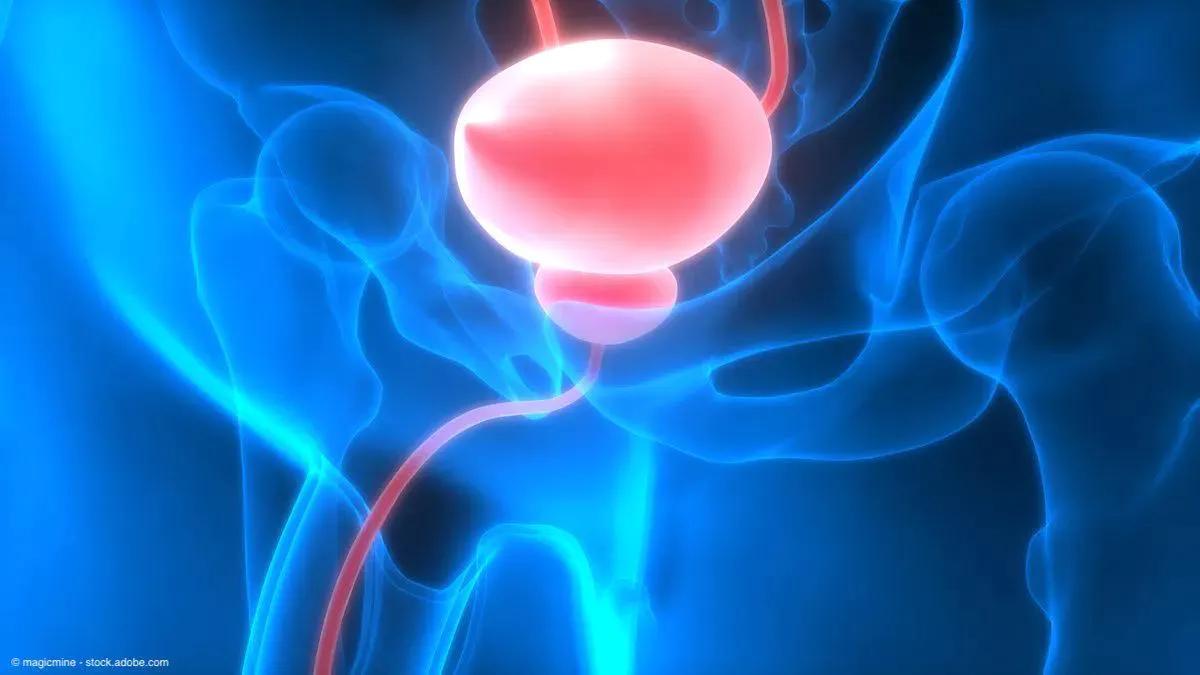Photodynamic therapy TLD-1433 shows initial promise in NMIBC
In total, the study plans to enroll approximately 100 BCG-unresponsive NMIBC CIS patients across 15 clinical study sites in the US and Canada.
The primary and secondary objectives have been met in a phase 2 study (NCT03945162) of the photodynamic therapy TLD-1433, being explored as a treatment option for patients with BCG-unresponsive non–muscle-invasive bladder cancer (NMIBC) carcinoma in situ (CIS), according to a news release from Theralase Technologies, the developer of the compound.1
Data completion is expected in 2026, after which Theralase hopes to file for FDA and Health Canada approval.

In total, 63 patients have been treated in the study to date. All patients received dosage with TLD-1433 via intravesical administration, activated by the TLC-3200 medical laser system.2
The primary objective of the study was met, with 64% (38/59) of evaluable patients achieving a complete response (CR) on at least 1 assessment date. The study’s other primary and secondary objectives were met with 37% (17/46) of evaluable patients achieving a CR at each assessment date. At the time of data collection, 1 patient’s responses at days 270 and 360 were still under review.
Overall, CRs were observed in 54% of patients at 6 months, 38% of patients at 12 months, and 37% of patients at 15 months. Theralase noted in the release that these rates exceed the guidelines from the International Bladder Cancer Group on clinically meaningful CR rates in BCG-unresponsive patients.
The interim data also showed that 63% of evaluable patients (n = 59) experienced a total response (CR + indeterminate response) at the 90-day assessment visit, with 56% achieving a CR. At 450 days, 41% of evaluable patients (n = 46) achieved a total response and 37% achieved a CR. Overall, 41% of patients with a total response and 37% of patients with a CR had a duration of response (DOR) of at least 450 days.
Among those patients who received the optimized study treatment (post August 1, 2020), 68% achieved a total response and 62% achieved a CR at the 90-day assessment visit. At 450 days, the total response rate was 44%, and the CR rate was 39%. Overall, 44% of patients with a total response and 39% of patients with a CR had a DOR of at least 450 days.
Regarding safety, more than 80% of patients remained in the study at 90-day follow-up. At the time of data collection, there were 13 serious adverse events (SAEs) reported, with the majority (n = 7) being grade 3. There were 4 instances of grade 4-5 SAEs. According to the news release, Theralase believes all SAEs to be unrelated to treatment drug or device.
The company is working to complete all patient enrollment and delivery of treatment in 2024. In total, the study plans to enroll approximately 100 BCG-unresponsive NMIBC CIS patients across 15 clinical study sites in the US and Canada.
Data completion is expected in 2026, after which Theralase hopes to file for FDA and Health Canada approval in 2026 or 2027. They also plan to resubmit a pre-break through designation submission to the FDA in the first quarter of 2024.
Arkady Mandel, MD, PhD, DSc, chief scientific officer of Theralase, concluded in a prior news release, “Theralase is delighted in its latest clinical data analysis. The Theralase RuvidarTM-based Anti-Cancer Therapy (ACT) has shown remarkable single-agent activity by proving to be safe and effective on a very difficult to treat BCG-unresponsive patient population that has been diagnosed with high-grade NMIBC CIS, with or without resected Ta / T1 papillary tumours. These patients have failed the standard of care, such as BCG therapy, and a large majority of them have failed treatment with various modern immunotherapy drugs. Theralase has been able to demonstrate strong efficacy in the form of a CR or IR, with a well-tolerated safety profile, after predominately 1 treatment. This ACT technology, pending successful regulatory approval and commercialization, will be very attractive to patients, uro-oncologists and the insurance companies that insure these patients.”3
References
1. Theralase(R) provides update on phase II bladder cancer clinical study. News release. Theralase Technologies Inc. Published online and accessed January 15, 2024. https://www.biospace.com/article/releases/theralase-r-provides-update-on-phase-ii-bladder-cancer-clinical-study/?s=86
2. Intravesical Photodynamic Therapy ("PDT") in BCG-Unresponsive/Intolerant Non-Muscle Invasive Bladder Cancer ("NMIBC") Patients. ClinicalTrials.gov. Last updated May 1, 2023. Accessed January 15, 2024. https://clinicaltrials.gov/study/NCT03945162
3. Theralase provides update on bladder cancer clinical study. News release. October 16, 2023. Accessed January 15, 2024. https://theralase.com/theralase-provides-update-on-bladder-cancer-clinical-study/
Speaking of Urology Podcast: Dr. Ritch and Dr. Katz discuss new bladder cancer management app
December 7th 2021“It's not a replacement for clinical judgment, obviously. But at the end of the day, the idea is that it shows you what your next steps are based on what the American Urological Association and [Society of Urologic Oncology] guidelines are for non-muscle invasive bladder cancer,” Chad R. Ritch, MD, MBA, FACS.
Cell therapy TARA-002 shows initial promise in NMIBC
April 9th 2024"This encouraging anti-tumor activity coupled with a favorable safety profile and mode of administration that is both convenient and familiar to urologists indicates that, if confirmed in future studies, TARA-002 could potentially play a meaningful role in NMIBC treatment in the future," says Timothy D. Lyon, MD.
